
Whether you like your baked brownies chewy and gooey or as fluffy as a piece of birthday cake, proper measurements and substitutions make all the difference. Oil is a common ingredient in baking recipes, acting as a binding agent while also providing the baked goods with necessary moisture . If you reach for oil and come up empty handed, substitution is fine, with some alternatives providing better results than others in brownie recipes.
Melted Butter or Margarine
Melted butter and margarine both give brownies a richer taste than oil, but require an additional two minutes of baking time. Regardless of which alternative you choose, melting it to a liquid state and letting it cool before adding it to the brownie recipe is a must. Use 1/4 cup more butter or margarine than you would oil to account for fat content. For instance, if your brownie recipe calls for 1/4 cup of oil, substitute 1/2 cup of melted butter or margarine. Test the brownies for doneness approximately 10 minutes prior to the end of the baking time to prevent dryness.
Fruit-Based Fat Replacements
Fruit-based fat replacements, located in your supermarket’s baking aisle, are commercially prepared fruit purees often containing prunes or apples, designed specifically for the purpose of reducing the fat content of baking recipes. Applesauce and fruit purees can be used as well. Cut the oil measurement in half when substituting a fruit-based fat replacement for oil in a brownie recipe. In other words, if your brownie recipe calls for 1/2 cup of oil, use 1/4 cup of the fruit-based fat replacement, checking the brownies for doneness 10 minutes prior to full bake time.
Yogurt and Buttermilk
Yogurt and buttermilk are two dairy-based substitutes for oil in brownie recipes. Add 3/4 cup of yogurt or buttermilk to account for the missing fat. As with all oil substitutes, it may be necessary to cut back on baking time to prevent dryness. Test the brownies by pressing a toothpick into the brownies 10 minutes before the end of baking time to check for doneness.
Skip the Shortening
It is a common misconception that melted vegetable shortening is a feasible substitute for oil in baking. This is not the case. Vegetable shortening is a solid fat, which makes it incompatible -- melted or not -- with oil, which is a liquid fat. Substituting melted vegetable shortening for oil in your brownie recipes may alter the taste and texture of the final product to such an extent that it is unpalatable.
Related Articles
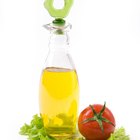
Can You Substitute Shortening for ...

Can You Use Applesauce in Place of ...

Can You Substitute Yogurt for ...
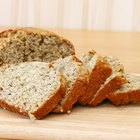
Oil Substitutes for Quick Bread

How to Lower the Fat in a Brownie Mix

Substitution for Oil in Baking Brownies

What Can Be Used to Substitute for ...

What Are the Causes of Pie & Pastry ...

Can You Substitute Vegetable Shortening ...

How to Use Emu Oil on Hair
How to Use Unsweetened Applesauce in ...
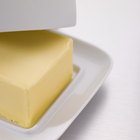
Butter Substitute for Molten Lava Cake

Canola Oil Vs. Lard in Baking
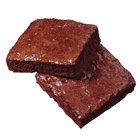
How to Replace Yogurt for Butter in ...

What Can You Substitute for Vegetable ...

What Are Good Substitutes for Vegetable ...

The Calories in a Cheese Omelette

Substitutes for Groundnut Oil in Cooking

FDA Standards of Chocolate Identity
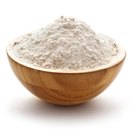
Can Jiffy Baking Mix Be Substituted As ...
References
Writer Bio
Jonae Fredericks started writing in 2007. She also has a background as a licensed cosmetologist and certified skin-care specialist. Jonae Fredericks is a certified paraeducator, presently working in the public education system.
Photo Credits
Jupiterimages/Photos.com/Getty Images